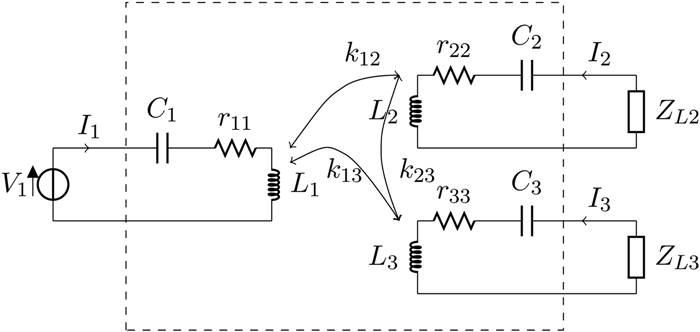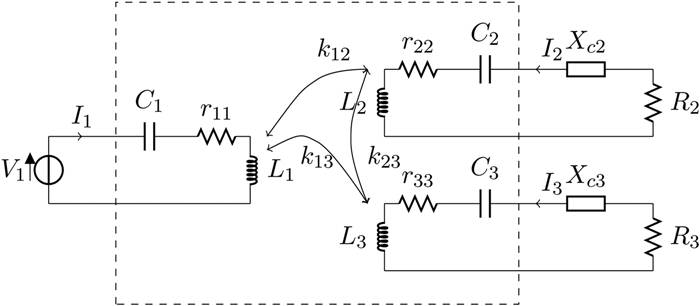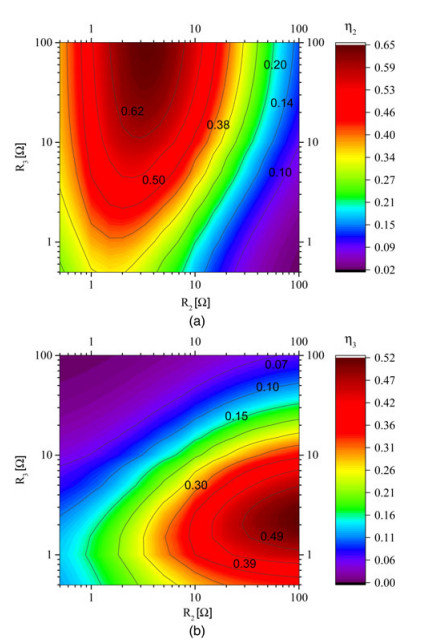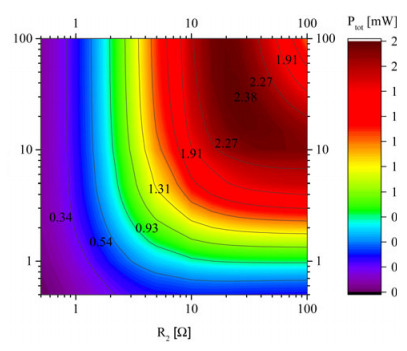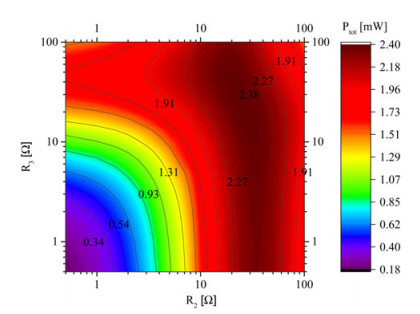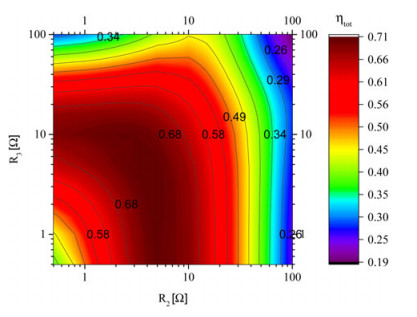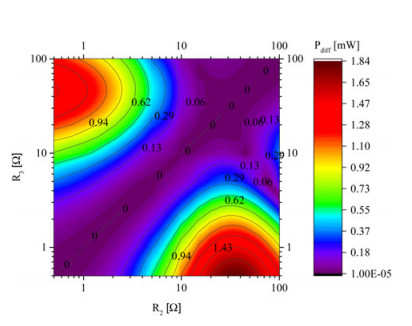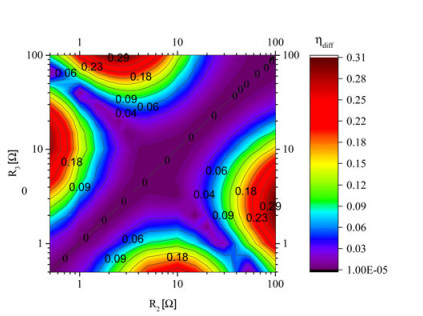Wireless power transfer between one transmitter and two receivers: optimal analytical solution
-
1.
Department of Engineering for Innovation, University of Salento, Lecce, Italy. Phone: +39 0832 29 7365
-
2.
Department of Communication Engineering, Nanjing University of Science and Technology, 210094 Nanjing, China
-
3.
Department of Engineering, University of Perugia, Perugia, Italy
-
4.
College of Electronic Science and Engineering, Nanjing University of Posts and Telecommunications, 210023 Nanjing, China
More Information
-
Author Bio:
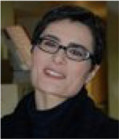 Giuseppina Monti
Giuseppina Monti Giuseppina Monti received the Laurea degree in Telecommunication Engineering (with honors) from the University of Bologna, Italy, in 2003, and the Ph.D. in Information Engineering from University of Salento (Italy), in 2007. She is currently with the Department of Innovation Engineering (University of Salento), where she is a temporary researcher and lecturer in CAD of Microwave circuits and Antennas. Her current research interest includes the analysis and applications of artificial media (such as, for instance, double-negative metamaterials and nano-carbontube), the analysis of electromagnetic compatibility and electromagnetic interference problems in planar microwave circuits, the design and realization of: microwave components and MEMS-based reconfigurable antennas and devices, rectenna systems, systems and devices for wireless power transmission applications. She has co-authored a chapter of a book and about 100 papers appeared in international conferences and journals.
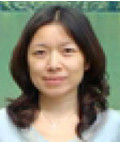 Wen Quan Che
Wen Quan Che Wen Quan Che (M-01–SM-11) received the B.Sc. degree from the East China Institute of Science and Technology, Nanjing, China, in 1990, the M.Sc. degree from the Nanjing University of Science and Technology (NUST), Nanjing, China, in 1995, and the Ph.D. degree from the City University of Hong Kong (CITYU), Kowloon, Hong Kong, in 2003. In 1999, she was a Research Assistant with the City University of Hong Kong. From March to September 2002, she was a Visiting Scholar at the Polytechnique de Montreal, Montreal, QC, Canada. She is currently a Professor at the Nanjing University of Science and Technology, Nanjing, China. From 2007 to 2008, she conducted academic research with the Institute of High Frequency Technology, Technische Universitaet Muenchen. During the summers of 2005–2006 and 2009–2013, she was with the City University of Hong Kong, as Research Fellow and Visiting Professor. She has authored or coauthored over 120 internationally referred journal papers and over 60 international conference papers. She has been a reviewer for IET Microwaves, Antennas and Propagation. Her research interests include electromagnetic computation, planar/coplanar circuits and subsystems in RF/microwave frequency, microwave monolithic integrated circuits (MMICs) and medical application of microwave technology. Dr. Che has been a reviewer for the IEEE transactions on microwave theory and techniques, IEEE transactions on antennas and propagation, IEEE transactions on industrial electronics, and IEEE microwave and wireless components letters. She was the recipient of the 2007 Humboldt Research Fellowship presented by the Alexander von Humboldt Foundation of Germany, the 5th China Young Female Scientists Award in 2008, and the recipient of Distinguished Young Scientist award by the National Natural Science Foundation Committee (NSFC) of China in 2012.
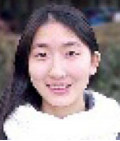 Qinghua Wang
Qinghua Wang Qinghua Wang was born in Jiangsu Province; China in 1993. She received the B.Sc. degree in 2014 from Nanjing University of Science and Technology (NUST), Nanjing, China. She is currently working towards the Ph.D. degree at NUST. Her research interest is mainly on wireless power transmission.
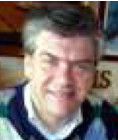 Marco Dionigi
Marco Dionigi has received the laurea degree (110/110 cum laude) in Electronic Engineering from the University of Perugia. He achieved at the same university the title of Ph.D. In 1997 he became Assistant Professor at the Faculty of Engineering of the University of Perugia. He took part in several research project regarding the development of software tools for waveguide and antenna fullwave simulation, the development of permittivity and moisture microwave sensors, the development of a SAR and ultrawideband antennas. He was coauthor of a paper awarded of the "Young Engineers Prize" at the European Microwave Conference 2005 in Paris. He is now involved in the study and development of high efficient wireless electromagnetic power transfer for industrial applications. He is author of more than 70 papers on international journal and conferences.
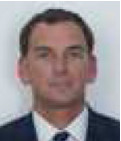 Mauro Mongiardo
Mauro Mongiardo received the laurea degree (110/110 cum laude) in Electronic Engineering from the University of Rome "La Sapienza" in 1983. In 1991 he became Associate Professor of Electromagnetic Fields and from 2001 he is Full Professor of Electromagnetic Fields at the University of Perugia. He has been elected Fellow of the IEEE "for contributions to the modal analysis of complex electromagnetic structures" in 2013. His scientific interests concern primarily the numerical modeling of electromagnetic wave propagation both in closed and open structures. His research interests involve CAD and optimization of microwave components and antennas. He has served in the Technical Program Committee of the IEEE International Microwave Symposium from 1992; from 1994 he is the member of the Editorial Board of the IEEE transactions on microwave theory and techniques. During the years 2008–2010 he has been Associate Editor of the IEEE transactions on microwave theory and techniques. He is author or co-author of over 200 papers and articles in the fields of microwave components, microwave CAD and antennas. He is the co-author of the books "Open Electromagnetic Waveguides" (IEE, 1997), and "Electromagnetic Field Computation by Network Methods" (Springer, 2009). Recently, he has co-authored a chapter in the book Wireless Power Transfer – Principles and Engineering Explorations (Intech, 2012), and a chapter in the book Wireless Power Transfer (River publishers, 2012).
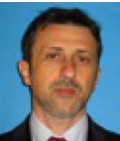 Renzo Perfetti
Renzo Perfetti received the laurea degree with honors in Electronic Engineering from the University of Ancona, Italy, in 1982, and the Ph.D. degree in Information and Communication Engineering from the University of Rome "La Sapienza" in 1992. From 1983 to 1987 he was with the radar division of Selenia, in Rome, where he worked on radar systems design and simulation. From 1987 to 1992 he was with the radiocommunication division of Fondazione U. Bordoni in Rome. In 1992 he joined the Department of Electronic and Information Engineering of the University of Perugia, Italy, where he is currently a Full Professor of electrical engineering. His current research interests include circuit theory, machine learning, audio and biomedical signal processing.
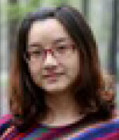 Yumei Chang
Yumei Chang Yumei Chang (M-12) was born in Hebei Province, China, in 1983. She received the M. Sc. degree in 2009 and the Ph.D. degree in 2014 from the Nanjing University of Science and Technology (NUST), Nanjing, China. From September 2012 to February 2013, she was a visiting scholar in the department of Electronic and Computer Engineering at University of Waterloo, Canada. She has authored or coauthored over 10 journal and conference papers. Her research interests include wireless power transmission, microwave absorbers, FSS and microwave/millimeter-wave devices
-
Corresponding author:
G. Monti Email: giuseppina.monti@unisalento.it
-
Abstract
This paper focuses on non-radiative wireless power transfer implemented by means of a resonant magnetic coupling. The case of one transmitter and two receivers is considered and a rigorous analytical procedure is developed demonstrating that maximum power transfer or maximum efficiency can be achieved by appropriately selecting the load values. Both cases of coupled and uncoupled receivers are solved; closed formulas are derived for the optimal loads, which maximize either power or efficiency. It is shown that the resistances that realize maximum power transfer are always greater than the resistances that realize maximum efficiency. According to this observation, an optimal range of operation for the load resistances is also determined. Furthermore, it is demonstrated that in the case where the receivers are coupled the introduction of appropriate compensating reactances allows retrieving the same results corresponding to the uncoupled case both for powers and efficiency. Theoretical data are validated by comparisons with numerical results.
-
About this article
Cite this article
Monti G, Che W, Wang Q, Dionigi M, Mongiardo M, et al. 2016. Wireless power transfer between one transmitter and two receivers: optimal analytical solution. Wireless Power Transfer 3(1): 63-73 doi: 10.1017/wpt.2016.3
|
Monti G, Che W, Wang Q, Dionigi M, Mongiardo M, et al. 2016. Wireless power transfer between one transmitter and two receivers: optimal analytical solution. Wireless Power Transfer 3(1): 63-73 doi: 10.1017/wpt.2016.3
|









 Giuseppina Monti Giuseppina Monti received the Laurea degree in Telecommunication Engineering (with honors) from the University of Bologna, Italy, in 2003, and the Ph.D. in Information Engineering from University of Salento (Italy), in 2007. She is currently with the Department of Innovation Engineering (University of Salento), where she is a temporary researcher and lecturer in CAD of Microwave circuits and Antennas. Her current research interest includes the analysis and applications of artificial media (such as, for instance, double-negative metamaterials and nano-carbontube), the analysis of electromagnetic compatibility and electromagnetic interference problems in planar microwave circuits, the design and realization of: microwave components and MEMS-based reconfigurable antennas and devices, rectenna systems, systems and devices for wireless power transmission applications. She has co-authored a chapter of a book and about 100 papers appeared in international conferences and journals.
Giuseppina Monti Giuseppina Monti received the Laurea degree in Telecommunication Engineering (with honors) from the University of Bologna, Italy, in 2003, and the Ph.D. in Information Engineering from University of Salento (Italy), in 2007. She is currently with the Department of Innovation Engineering (University of Salento), where she is a temporary researcher and lecturer in CAD of Microwave circuits and Antennas. Her current research interest includes the analysis and applications of artificial media (such as, for instance, double-negative metamaterials and nano-carbontube), the analysis of electromagnetic compatibility and electromagnetic interference problems in planar microwave circuits, the design and realization of: microwave components and MEMS-based reconfigurable antennas and devices, rectenna systems, systems and devices for wireless power transmission applications. She has co-authored a chapter of a book and about 100 papers appeared in international conferences and journals.  Wen Quan Che Wen Quan Che (M-01–SM-11) received the B.Sc. degree from the East China Institute of Science and Technology, Nanjing, China, in 1990, the M.Sc. degree from the Nanjing University of Science and Technology (NUST), Nanjing, China, in 1995, and the Ph.D. degree from the City University of Hong Kong (CITYU), Kowloon, Hong Kong, in 2003. In 1999, she was a Research Assistant with the City University of Hong Kong. From March to September 2002, she was a Visiting Scholar at the Polytechnique de Montreal, Montreal, QC, Canada. She is currently a Professor at the Nanjing University of Science and Technology, Nanjing, China. From 2007 to 2008, she conducted academic research with the Institute of High Frequency Technology, Technische Universitaet Muenchen. During the summers of 2005–2006 and 2009–2013, she was with the City University of Hong Kong, as Research Fellow and Visiting Professor. She has authored or coauthored over 120 internationally referred journal papers and over 60 international conference papers. She has been a reviewer for IET Microwaves, Antennas and Propagation. Her research interests include electromagnetic computation, planar/coplanar circuits and subsystems in RF/microwave frequency, microwave monolithic integrated circuits (MMICs) and medical application of microwave technology. Dr. Che has been a reviewer for the IEEE transactions on microwave theory and techniques, IEEE transactions on antennas and propagation, IEEE transactions on industrial electronics, and IEEE microwave and wireless components letters. She was the recipient of the 2007 Humboldt Research Fellowship presented by the Alexander von Humboldt Foundation of Germany, the 5th China Young Female Scientists Award in 2008, and the recipient of Distinguished Young Scientist award by the National Natural Science Foundation Committee (NSFC) of China in 2012.
Wen Quan Che Wen Quan Che (M-01–SM-11) received the B.Sc. degree from the East China Institute of Science and Technology, Nanjing, China, in 1990, the M.Sc. degree from the Nanjing University of Science and Technology (NUST), Nanjing, China, in 1995, and the Ph.D. degree from the City University of Hong Kong (CITYU), Kowloon, Hong Kong, in 2003. In 1999, she was a Research Assistant with the City University of Hong Kong. From March to September 2002, she was a Visiting Scholar at the Polytechnique de Montreal, Montreal, QC, Canada. She is currently a Professor at the Nanjing University of Science and Technology, Nanjing, China. From 2007 to 2008, she conducted academic research with the Institute of High Frequency Technology, Technische Universitaet Muenchen. During the summers of 2005–2006 and 2009–2013, she was with the City University of Hong Kong, as Research Fellow and Visiting Professor. She has authored or coauthored over 120 internationally referred journal papers and over 60 international conference papers. She has been a reviewer for IET Microwaves, Antennas and Propagation. Her research interests include electromagnetic computation, planar/coplanar circuits and subsystems in RF/microwave frequency, microwave monolithic integrated circuits (MMICs) and medical application of microwave technology. Dr. Che has been a reviewer for the IEEE transactions on microwave theory and techniques, IEEE transactions on antennas and propagation, IEEE transactions on industrial electronics, and IEEE microwave and wireless components letters. She was the recipient of the 2007 Humboldt Research Fellowship presented by the Alexander von Humboldt Foundation of Germany, the 5th China Young Female Scientists Award in 2008, and the recipient of Distinguished Young Scientist award by the National Natural Science Foundation Committee (NSFC) of China in 2012.  Qinghua Wang Qinghua Wang was born in Jiangsu Province; China in 1993. She received the B.Sc. degree in 2014 from Nanjing University of Science and Technology (NUST), Nanjing, China. She is currently working towards the Ph.D. degree at NUST. Her research interest is mainly on wireless power transmission.
Qinghua Wang Qinghua Wang was born in Jiangsu Province; China in 1993. She received the B.Sc. degree in 2014 from Nanjing University of Science and Technology (NUST), Nanjing, China. She is currently working towards the Ph.D. degree at NUST. Her research interest is mainly on wireless power transmission.  Marco Dionigi has received the laurea degree (110/110 cum laude) in Electronic Engineering from the University of Perugia. He achieved at the same university the title of Ph.D. In 1997 he became Assistant Professor at the Faculty of Engineering of the University of Perugia. He took part in several research project regarding the development of software tools for waveguide and antenna fullwave simulation, the development of permittivity and moisture microwave sensors, the development of a SAR and ultrawideband antennas. He was coauthor of a paper awarded of the "Young Engineers Prize" at the European Microwave Conference 2005 in Paris. He is now involved in the study and development of high efficient wireless electromagnetic power transfer for industrial applications. He is author of more than 70 papers on international journal and conferences.
Marco Dionigi has received the laurea degree (110/110 cum laude) in Electronic Engineering from the University of Perugia. He achieved at the same university the title of Ph.D. In 1997 he became Assistant Professor at the Faculty of Engineering of the University of Perugia. He took part in several research project regarding the development of software tools for waveguide and antenna fullwave simulation, the development of permittivity and moisture microwave sensors, the development of a SAR and ultrawideband antennas. He was coauthor of a paper awarded of the "Young Engineers Prize" at the European Microwave Conference 2005 in Paris. He is now involved in the study and development of high efficient wireless electromagnetic power transfer for industrial applications. He is author of more than 70 papers on international journal and conferences.  Mauro Mongiardo received the laurea degree (110/110 cum laude) in Electronic Engineering from the University of Rome "La Sapienza" in 1983. In 1991 he became Associate Professor of Electromagnetic Fields and from 2001 he is Full Professor of Electromagnetic Fields at the University of Perugia. He has been elected Fellow of the IEEE "for contributions to the modal analysis of complex electromagnetic structures" in 2013. His scientific interests concern primarily the numerical modeling of electromagnetic wave propagation both in closed and open structures. His research interests involve CAD and optimization of microwave components and antennas. He has served in the Technical Program Committee of the IEEE International Microwave Symposium from 1992; from 1994 he is the member of the Editorial Board of the IEEE transactions on microwave theory and techniques. During the years 2008–2010 he has been Associate Editor of the IEEE transactions on microwave theory and techniques. He is author or co-author of over 200 papers and articles in the fields of microwave components, microwave CAD and antennas. He is the co-author of the books "Open Electromagnetic Waveguides" (IEE, 1997), and "Electromagnetic Field Computation by Network Methods" (Springer, 2009). Recently, he has co-authored a chapter in the book Wireless Power Transfer – Principles and Engineering Explorations (Intech, 2012), and a chapter in the book Wireless Power Transfer (River publishers, 2012).
Mauro Mongiardo received the laurea degree (110/110 cum laude) in Electronic Engineering from the University of Rome "La Sapienza" in 1983. In 1991 he became Associate Professor of Electromagnetic Fields and from 2001 he is Full Professor of Electromagnetic Fields at the University of Perugia. He has been elected Fellow of the IEEE "for contributions to the modal analysis of complex electromagnetic structures" in 2013. His scientific interests concern primarily the numerical modeling of electromagnetic wave propagation both in closed and open structures. His research interests involve CAD and optimization of microwave components and antennas. He has served in the Technical Program Committee of the IEEE International Microwave Symposium from 1992; from 1994 he is the member of the Editorial Board of the IEEE transactions on microwave theory and techniques. During the years 2008–2010 he has been Associate Editor of the IEEE transactions on microwave theory and techniques. He is author or co-author of over 200 papers and articles in the fields of microwave components, microwave CAD and antennas. He is the co-author of the books "Open Electromagnetic Waveguides" (IEE, 1997), and "Electromagnetic Field Computation by Network Methods" (Springer, 2009). Recently, he has co-authored a chapter in the book Wireless Power Transfer – Principles and Engineering Explorations (Intech, 2012), and a chapter in the book Wireless Power Transfer (River publishers, 2012).  Renzo Perfetti received the laurea degree with honors in Electronic Engineering from the University of Ancona, Italy, in 1982, and the Ph.D. degree in Information and Communication Engineering from the University of Rome "La Sapienza" in 1992. From 1983 to 1987 he was with the radar division of Selenia, in Rome, where he worked on radar systems design and simulation. From 1987 to 1992 he was with the radiocommunication division of Fondazione U. Bordoni in Rome. In 1992 he joined the Department of Electronic and Information Engineering of the University of Perugia, Italy, where he is currently a Full Professor of electrical engineering. His current research interests include circuit theory, machine learning, audio and biomedical signal processing.
Renzo Perfetti received the laurea degree with honors in Electronic Engineering from the University of Ancona, Italy, in 1982, and the Ph.D. degree in Information and Communication Engineering from the University of Rome "La Sapienza" in 1992. From 1983 to 1987 he was with the radar division of Selenia, in Rome, where he worked on radar systems design and simulation. From 1987 to 1992 he was with the radiocommunication division of Fondazione U. Bordoni in Rome. In 1992 he joined the Department of Electronic and Information Engineering of the University of Perugia, Italy, where he is currently a Full Professor of electrical engineering. His current research interests include circuit theory, machine learning, audio and biomedical signal processing.  Yumei Chang Yumei Chang (M-12) was born in Hebei Province, China, in 1983. She received the M. Sc. degree in 2009 and the Ph.D. degree in 2014 from the Nanjing University of Science and Technology (NUST), Nanjing, China. From September 2012 to February 2013, she was a visiting scholar in the department of Electronic and Computer Engineering at University of Waterloo, Canada. She has authored or coauthored over 10 journal and conference papers. Her research interests include wireless power transmission, microwave absorbers, FSS and microwave/millimeter-wave devices
Yumei Chang Yumei Chang (M-12) was born in Hebei Province, China, in 1983. She received the M. Sc. degree in 2009 and the Ph.D. degree in 2014 from the Nanjing University of Science and Technology (NUST), Nanjing, China. From September 2012 to February 2013, she was a visiting scholar in the department of Electronic and Computer Engineering at University of Waterloo, Canada. She has authored or coauthored over 10 journal and conference papers. Her research interests include wireless power transmission, microwave absorbers, FSS and microwave/millimeter-wave devices 


